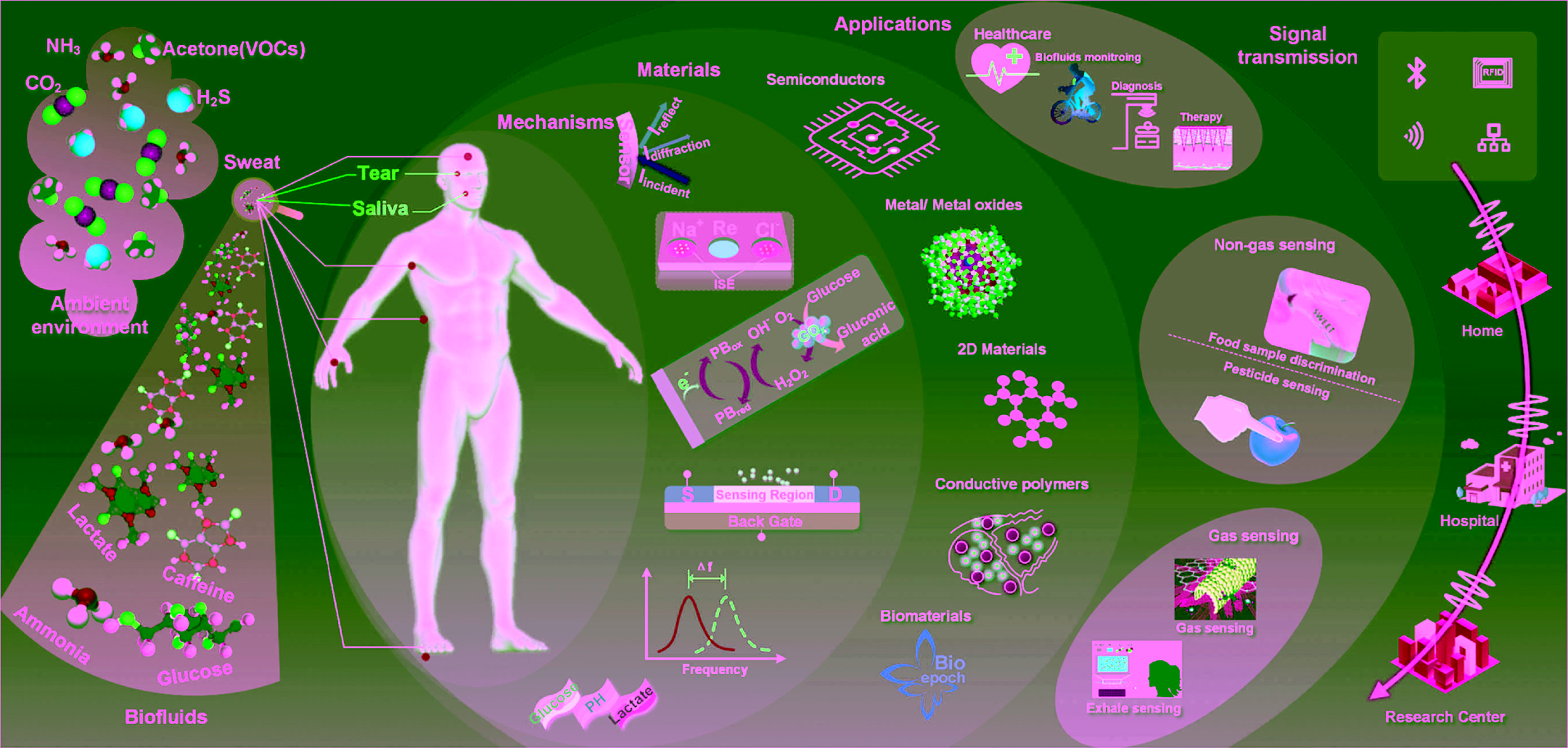文章专利

- 地址: 江苏省苏州市苏州工业园区若水路398号
- 邮箱: tzhang2009@sinano.ac.cn
- 电话: 86-512-62872706
- 传真: 0512-62603079
- 网址: http://nanosensor.sinano.ac.cn

Advances in Chemical Sensing Technology for Enabling the Next-Generation Self-Sustainable Integrated Wearable System in the IoT Era; Nano Energy, 2020, 78: 105155.
Feng Wen; Tianyiyi He; Huicong Liu*; Hanyi Chen*; Ting Zhang*; Chengkuo Lee*;

Abstract:
The past few years have witnessed the rapid innovation of wearable chemical sensors that induce impacts on various areas of our daily life. As the emerging Internet of Thing (IoT), wearable chemical sensors hold considerable promise not only for healthcare and fitness applications but also for other diversified applications ranging from environment monitoring to security/forensic identification. With the vision of more versatile, convenient, communicating and integrated, this review provides a comprehensive overview of the recent progress of wearable chemical sensors and systems. First, in terms of healthcare application, the development of wearable chemical sensors for markers detection from sweat is reviewed in the aspect of transduction mechanism and structural configuration (i.e., soft/soft-hard integration patch, tattoo, and microfluidics). Then the evolution of wearable tear and saliva sensors from simple sensor design to integrated system (e.g., communication module and power supply integration) are reviewed. Next, treatment (i.e., drug delivery), as an indispensable part of close loop sensing-therapeutic system establishment, is reviewed via the representatives of microneedle technology. Additionally, the progress of wearable chemical sensors for environmental monitoring and security/forensic applications are presented, showing the development of self-sustainable/on-site testing systems. With this review, we believe the development trend of wearable chemical sensors is towards multifunctional, sensing-therapeutic, self-powered and integrated systems.
Full Article: https://www.sciencedirect.com/science/article/pii/S2211285520307333
